Season 3 / Episode 8 / 32:29
Chad Griffiths | Industrial Real Estate Broker, Investor and Host of the Industrial Real Estate Podcast | People are the true asset in buildings
Transcript
DA: Welcome to TEN, the Tenant Experience Network. I’m your host, David Abrams. In this episode, we are connecting with Chad Griffiths, partner, associate broker with NAI Commercial Real Estate. In this episode, we learned about Chad’s journey to entrepreneurship. It all started with selling hockey cards at the young age of 11 years old. Fast forward, Chad is still committed to providing excellent customer service as a partner at NAI Commercial, where he specializes and invests in the industrial sector. Chad likes to say that he eats, sleeps and breathes all things industrial. He admits that much of his success can be attributed to being resilient whenever he was faced with receiving no’s over the course of his career. We both have a love and appreciation of building towers, and we discussed how the industrial sector is continuing to evolve. Chad shares his perspective on the office market and city cores, the opportunity for suburban office space to meet increased demand, and how industrial space is taking on different use cases to meet emerging needs. He believes that the building itself can be a major determinant to make the physical workspace more appealing. Placing an emphasis on what tenants want can have a direct correlation to the value of that building. We both agree that people are the true asset in buildings and they need to be engaged in a more meaningful way. Chad reveals that the industrial space has not fully tapped into the wave of new technologies that have hit the office and retail sectors. We both agree this new normal requires building operators to be more nimble, to respond faster with more creative solutions. We’re excited to share this podcast with you. So be sure to subscribe to Ten so you never miss an episode of the Tenant Experience Network. And now I’d like to welcome Chad to the show. Really glad you could be with us today.
CG: Hey, thanks so much for having me on David. Really looking forward to chatting with you.
DA: Absolutely. Looking forward to our conversation. So, tell us about your journey to your current position role. How did you get started?
Read more
CG: Yeah, so I think I could take it all the way back to when I was 11 or 12 years old and I decided to sell hockey cards on the side of the road. So I set up a table, sold hockey cards to anybody that wanted to come by, and met a number of people, sold a bunch of hockey cards. And I think I realized at that point that I wanted to be an entrepreneur. So fast forward to today, I’m an industrial real estate broker, primarily. I’m a partner at my firm and I also started investing in industrial real estate myself in 2014. With a series of partners and a lot of bank financing, we’ve got a decent portfolio of about $18 million right now, all within about 20 minutes of my office, all industrial real estate. So I like to say that I live, breathe and sleep industrial real estate right now.
DA: Amazing. Well, certainly a great start to a Canadian entrepreneur, selling hockey cards.
CG: I probably sold a Wayne Gretsky rookie card for all I knew, as I was 11 or 12 years old. It probably, goes into good inventory of what I actually had.
DA: Oh, if only you’d hung onto that one.
CG: Mm-hmm.
DA: So just curious, and before we move on, but why industrial? What led you to industrial so quickly on in your career?
CG: It was purely accidental, actually. I, so I was buying and selling some houses with some friends in my early 20s, got their itch to do real estate. So I actually joined a resident, I became a residential real estate agent in 2004, did it for about a year and just didn’t see that as a long-term plan as I extrapolated out how I thought that would look. So in 2005, I got into commercial real estate, joined a commercial real estate brokerage, and I thought I’d be working in like, those sexy assets, like office towers or retail shopping centers. Just so happened the office that I joined was heavily focused on industrial real estate, so purely serendipitously, yeah, using the, a word that I probably had to make sure I said correctly.
DA: Right.
CG: I just got into industrial real estate purely by accident.
DA: Great.
CG: So, I’m very glad that I did. I knew very little about it when I came into the industry, but some 17 years later now, is one of the best things that ever happened to me.
DA: Right. Well, we’ll talk more about specifically industrial, because I think it’s an asset class that perhaps was overlooked for many years and now, yeah, you know, coming through the pandemic, I think is a really interesting class for a variety of reasons. As it relates to our subject matter, I’m looking forward to delving deeper into that with you as a product expert. Why do you think you were so uniquely suited for this opportunity? What helped you to become successful? Skills, mentors, colleagues, books, you know, yes, maybe having sold hockey cards early on in your career, but what else?
CG: I would say the biggest attribute that has contributed to that success has just been my attitude towards providing the best service that I could. And that probably sounds a little bit cliche, but going back to every job that I had starting from selling hockey cards, I was always working in the service industry, whether it was, you know, waiter or a bartender, I worked, I sold clothing for a while. I had always had that customer-facing attitude of, how can I just provide the best service. And I think I combined that with the fact that I could take a lot of no’s. I was very resilient, particularly early in my career. And again, that all stems back to selling hockey cards. A lot of people would’ve stopped by just to see what this 11 or 12-year-old kid was selling on the side of the road, and a lot of people had no interest in buying hockey cards. A lot of people have no interest in what I’m selling even today. Very few people actually need industrial real estate, and even the ones that do, they might not need it right now. They might have a need two years out, down the road. So I’ve, I was very resilient early in my career, I took a lot of no’s and I just took it in stride. And the people that did say yes, I just tried to deliver the best service that I could. And I’d say there’s a number of other reasons. Like you mentioned, there’s mentors, there’s books, there’s a desire to want to learn and progress as much as I can. That certainly played an instrumental role in that as well, but I would say being willing to take a lot of no’s and the ones that said yes, giving them the best service that I could was probably, at least top of mind that’s the one that stands out.
DA: Right. Well, that’s not unlike my journey as a technology founder, I’ll tell you that. And given my background, my DNA in the service industry, you know, running a marketing and communications agency as long as I did, I recognize that even though, again, I’m selling technology today, I still bring that work ethic and that approach to delivering a service and ensuring that the clients have an unparalleled experience.
CG: What was your background before getting into software?
DA: Yeah. I ran a marketing and communications agency and that’s how I got into commercial real estate. So I pitched and won a very large office commercial project in Toronto, and that began a long journey of providing similar service to almost every major office tower in Toronto at one point or another.
CG: Oh.
DA: So, I love office buildings. That’s sort of my area of expertise. I’m kind of a building geek and truly, you know, over time began to appreciate all that goes on to making those buildings work. You know, people walk into a building and they think magically, everything just works and I’ve had the opportunity to be in the bowels of buildings and all aspects of seeing how those buildings operate, from security to maintenance to life safety, and I appreciate all the complexity that is involved in ensuring that everything runs smoothly. So, I don’t know. I love it, and that’s really what led to the development of HILO many years later.
CG: That’s fascinating.
DA: Yeah.
CG: And I was the same way. I was very attracted to office buildings when I first got into commercial real estate for many of the reasons that you said. I love, in addition to all the inner workings of it, I just love the architecture.
DA: Right.
CG: And the fact that you could have 50, 60 floors of tenants in there with, and the views are incredible.
DA: Stacked on each other.
CG: I’ve always been a big fan of office buildings as well. I think it’s one of like the coolest things to see in a city is the skyline of the buildings.
DA: Right. Well, interestingly, for many years, I would always have my office located more of an in an industrial-type unit, industrial setting. You know, single floor, but wanted that industrial experience, but they were often multi-tenanted. So we’re going to talk more about the evolution of industrial and perhaps how industrial is spreading just beyond the typical use case. I.e., you know, a single large manufacturer or producer with a warehouse. And so we’ll talk more about that. Because I think that we’re going to continue to see some really exciting changes in that space. There’s been a lot of commentary around the return to workplace coming through COVID, and certainly some very extreme opinions being expressed. Often polarizing, sometimes confrontational. You know, my team believes strongly that everyone needs to live and work in the world as it is right now, and that the commercial real estate industry and employers, you know, we can’t continue to project a date in the future when we’re going to come back, when we’re going to return to normal, or an old normal because maybe this is the new normal, and living in a world with COVID is what we all have to come to terms with. So I’m just curious from your perspective, what do you think that means for the commercial real estate industry and specifically for the industrial sector?
CG: Yeah. And maybe I’ll start on the office sector first, just because I’m not an expert on office, but I follow it pretty closely. And like we talked about, I’m a fan of it as well. I think the downtown office market across the world is going to struggle. I think there’s going to be some downward pressure as some of these tenants have leases come up. You have to keep in mind when COVID came in in March 2020, it’s not like companies were just on month-to-month leases.
DA: Right.
CG: A big accounting firm wasn’t doing a month-to-month lease on a hundred thousand square feet. They had long-term leases. In some cases it could be 5, 10, 15 years. But as the new normal, and I agree, I think that’s a great way of describing it is, this is the new normal. Things have changed.
DA: Right.
CG: And I, perhaps even irrevocably. Like, I don’t know if it goes back to what it was pre 2020. So I think on the side of downtown office space, some of these companies are going to start reconfiguring how they use space. I think they’re going to start looking at how much space they actually need. And I think that there’s going to be some downward pressure on that. I don’t know if it’s going to be catastrophic, and I wouldn’t even go so far as to suggest that it would get to that level, but I think that there is going to be downward pressure as companies reevaluate how much space that they need. I can’t see growth in that section. And anytime that there’s an absence of growth, you have to start expecting there could be a contraction. So, whether some of these office buildings get retrofitted to hotels or multifamily or perhaps even some of the old class B, class C space gets demolished, I think that that downtown market’s going to be affected. I think in the suburbs, different story. They haven’t been built out to the same level as a downtown core. And from people that I’ve talked to, there’s still an appetite to be in an office space for, to some extent.
DA: Right.
CG: Very few companies I’ve talked to are moving exclusively to work from home. So they’re still going to want to be a presence, but people might not want to make the commute downtown any longer. That always seems to be the main sticking point on why people don’t want to go back to the office is an half hour, one hour commute. But if they can have a presence in the suburbs and perhaps the 15-minute commute to get to the office, I still see that being viable. Hard to anticipate a lot of growth in that area as well, but office, I think, is going to struggle for those reasons. Industrial, I think, is going to overlap a lot with that suburban space because a lot of the industrial buildings are compatible and even zoned appropriately to allow for office space.
DA: Right.
CG: One building that we own, it’s an industrial zoned building, south side of our town and our office is actually in it. We’re 100% office user, even though it’s an industrial zoned building. So I think given the strength of the industrial market and the appeal of some of these companies to consider looking at an industrial building and retrofitting it for office, I think that that’s going to make that section appealing. A bigger topic is just everything that’s going on right now in the economy, is interest rates and inflation and potential recession, that there could be some pressure on the entire market as a whole. But if I were to bet, and I am a betting man because I’ve got a lot of my money tied up in this.
DA: Right.
CG:I think industrial’s going to do better than office will in the foreseeable future.
DA: Right. All interesting observations, and much of it, I agree with, and I think there’s a lot that will continue to unfold in the months and year or so to come. You know, I think that, yes, there’s going to be downward pressure and I think that, you know, occupiers are thinking about their space. But to your point, you also mentioned, you know, how they reconfigure their space and is it less footprint or just a different footprint. In some cases it could be less. But I think, you know, that story is going to continue to unfold. Is there anything that you think that buildings can do to continue to demonstrate their importance to both businesses and people in how we conduct business? What role does the building have in supporting the occupier and the people that work in their buildings?
CG: I think the building is the defacto reason on why people either want to go to work or they don’t want to go to work. And this makes sense to me intuitively, that if I was working in a cubicle, in an office space that had very little natural sunlight and I was cramped in this space and I had just finished working at home for the last year and a half, would I want to go back to that office space? I mean, I think that that’s really what’s drawing a lot of people to continue to want to work from home, is that it sucks. Like, I just wouldn’t want to do that. I wouldn’t want to go back to working in a cubicle when I’ve been working at my house.
DA: Yeah.
CG: So I think that, I think owners and companies are going to have to start looking at how they can make an office space appealing to people, for people to want to come back instead of just saying.
DA: Right.
CG: You need to come back and here’s your cubicle. Get to work or we’re going to find someone else. I think that’s the wrong approach. I think instead, what they need to do is offer something that makes them say, okay, yeah, I want to be back in this space. I enjoy it, I enjoy the camaraderie and the synergy that comes for having it there, and just the social interaction of.
DA: Yep.
CG: Instead of being isolated in their basement. I think that they have to rethink how they get people, how they attract people back instead of just forcing them to go back.
DA: 100% percent agree. My last interview was with Lisa Kirsch from Landis, a technology startup helping people acquire their first home, based in New York. And they just moved into new space in Midtown Manhattan. And we talked a lot about, you know, providing that kind of flexibility and autonomy to their people, but also giving a compelling reason why the physical workplace environment has something to offer and something that’s distinct from working at your dining room table or, you know, from the deck at the cottage. So, I think it’s not a mandate to come back. I agree with you. And I think the building and the occupier both have a role to play in giving a compelling reason why there’s value in being in that physical workplace setting. And there are things you can’t get at home.
CG: Absolutely.
DA: Just like there are things at home you can’t get at the office. And maybe the best of all of this will be, you know, truly, truly a hybrid work situation where, you know, people can get the best work done in the best location. And I’m excited to see how that story continues to unfold. You know, the pandemic, in my opinion, has really recalibrated the market and it’s caused many people to finally realize that buildings are really just places for people, that the people are the real asset. And I think for so long, building operators generally felt that, you know, buildings were the asset. So as a result, we believe that tenant experience or workplace experience is fast becoming the new differentiator. It used to be you chose your buildings based on location and class. We believe now that people are going to be looking for the experience that that building offers and that connects to this notion of flight to quality. You know, what are people looking for and why are certain buildings, you know, really expanding and increasing their tenancy even during these difficult times? So I’m just curious if creating the best customer experience for tenants, you know, is what is going to draw people back. What are your thoughts on how we might define tenant experience, customer experience, now and in the future?
CG: Yeah, that’s really well said. And that goes back to one of the core beliefs I have about real estate, is that the value of real estate is really just some function of what a tenant’s willing to pay for it. So if a tenant is willing to pay X amount, then the building’s going to be some function of X.
DA: Right.
CG: So I think putting that emphasis on what tenants want is more imperative now than it’s ever been. So I completely agree with how you phrased that. I think it just, it goes back to, what can you offer to the company and the employees by extension to make them feel like they would, that they want to be in that building? And I would point to the, even just being in an office space myself. Amenities are great.
DA: Right.
CG: Ability to have parking or at least accessible parking is really important. Synergy with other companies so that you can meet with other people quickly if you need to. Any type of building amenities, if there’s a gym or a cafe or restaurant in there. Anything to just make that experience more attractive, I think will go a large way from comparing it to a building that has none of that. So I think it’s just reconfiguring how owners are thinking. And you said it perfectly, is, instead of looking at the building as an asset, it’s the people in there that are the asset. That’s what’s driving the rent, that’s what’s going to drive the value of the building. So what do they want? And it could be as simple as just asking them. There could be a tenant in there that makes up a large portion of the building. Has the owner had a conversation with them to say, what could you guys use? What would you benefit from? And maybe there’s something that they hadn’t even thought of before. But I think that two-way dialogue is going to be more important than ever to, like you said, make sure that the company’s happy.
DA: And I think that two-way communication is sort of the driver, even today. It was pre-pandemic and has become the driver again in terms of demand for our platform, the ability to provide a tool, a channel to create that two-way communication. You know, specific to the industrial sector, I really think as I think more about it, and although we’ve been focused on office and also multifamily, I think industrial’s going to provide an interesting opportunity for our company to start to think about how we can offer our service and how we can respond to the emerging changes that are taking place in industrial, whereby it’s not just one large, you know, warehouse type user now. And even in that case, there are still people that work there, right. There are still people that are deserving of a great experience. So, have you seen any technology in the industrial setting that is used to help foster, support tenant experience? I kind of feel like this is a bit of an untapped market for us.
CG: Yeah. And nothing jumps to mind. It’s, to some extent, a very archaic industry. It’s the metaphor of just being four walls and a roof is apt in many cases.
DA: Right.
CG: That’s literally what it is. It’s, it has become a lot more sophisticated is, we are seeing more technology incorporated and a lot of robotics now, a lot of the internet of things. Internet connectivity has become a pretty big concern. If it doesn’t have fiber or high speed internet, that’s becoming a concern. So it is starting to catch up. There’s more automation. But in terms of property owners fostering a relationship with the company.
DA: Right.
CG: Yeah, not much that I’ve come across. I say not much, nothing.
DA: Well, that to me is opportunity. And definitely following this show, we’ll definitely connect and talk more about that. Maybe we can start sort of chart new waters in that area. I think it’d be quite exciting. Chad, let’s take a short break and we’ll be right back.
Commercial Break
DA: All right. We’re back with Chad Griffith’s, partner, associate broker at NAI Commercial Real Estate. I’m really glad you could be with us today.
CG: Yeah. Thanks again, David. Really enjoying the conversation so far.
DA: Awesome. So, you know, living through a pandemic has been really challenging for so many people. I don’t take it lightly and I don’t forget, you know, all that it has brought to so many people’s lives, the challenges and the inconveniences, and in some cases personal loss. But it’s also provided an opportunity for us all now to be better, do better and build something better. It can’t be an excuse any longer. Can you share any details about any aspect of your business, some part or new service that you’re thinking about that you’ve re-imagined to reflect the reality we are in today?
CG: Yeah, that’s a really good question, David. I don’t know if there’s any one particular thing that jumps out immediately, but what I would say is, it’s caused me to be a lot more nimble so that when things come up, there’s a plan that can get implemented rather quickly as opposed to sitting on the hands and just waiting for someone to have direction. I think ourselves, both myself as a partner, our company, as well as a partner in buildings that we own, you have to be able to pivot.
DA: Right.
CG: And that’s a terrible business cliche that seems to have been overused the last two years. But I think that the worst thing that could come out of this pandemic is that everybody just goes back to normal.
DA: Right.
CG: And forgets about this. Like I, the history books will look back on this period and say this was tumultuous. There’s so much uncertainty and volatility and questions being asked, and nobody had answers at the beginning, and I think there’s still a number of questions that are unanswered. But if nothing else comes of this, I think we need to recognize that there are major things that can happen at any given time, without notice, and you just have to be able to respond to it.
DA: I think that’s a great insight, and I’ve heard that articulated by others. And also in terms of, you know, again, commercial real estate, a legacy industry typically moves rather slow. You know, a lease negotiation could take months and months and months. And I think what I’d be hearing is that we’ve got to move quickly, we’ve got to respond. We do need those plans in place. We need to be able to, you know, a tenant comes and needs space configured in a certain way. We need to be able to, you know, either have it in inventory or be able to provide it and turn it around quickly. We need to be able to provide a short-term lease agreement that might be two or three or four pages and not 50 or 100 pages. So, how do we become more nimble, more responsive, move quickly, respond to those emerging needs? So, I think that’s a great insight and I think that there are many opportunities in which the industry can respond along that line of thinking.
CG: Yeah, I agree. I think that that’s a great example, is the ability to pivot to a shorter-term lease if that’s required.
DA: Right.
CG: And some of the most successful property owners that I’ve worked with are exactly that. If they need to, in early pandemic, in March, April, March, April, May, those three months where it was really uncertain, there was still landlords that were just being very creative.
DA: Right.
CG: How can we help out our tenants, and as opposed to, how do we help out ourselves. Let’s try to see this through together because the world is going to get back to some type of normalcy at some point, so how can we go through this? The landlords that took the approach that if you don’t pay rent, we’re kicking you out.
DA: Right.
CG: They’re, they’ve severed that relationship. So, yeah, I think that the ability to adapt to the situation is key.
DA: You know, I think we were always in a relationship business, but that relationship was generally driven by 5, 10, 15, 20 year leases. I think now, building operators recognize we’re in a relationship business that is governed by the people coming in and out of their buildings every single day.
CG: Yeah. Well said.
DA: And I think that’s an awesome outcome. Because I think it levels the playing field and I think it creates a better product, and I think everybody’s going to win at the end of the day if we’re thinking in those terms.
CG: Yeah. And that’s a, raises a really good point is, how many property owners actually study and analyze the people that are coming in and out of their building? They’ll deal with the tenant, whether it’s a CFO or the president or the owner of the company. They’ll deal with them negotiating the lease, but how, do they actually see how people come and go from the property?
DA: Right.
CG: I can say as a property owner myself, I haven’t. I haven’t observed that, but I think you’re spot on.
DA: Well.
CG: That is something we should all be looking at carefully.
DA: Well again, and I think it is happening now. I recently had Jon Love, CEO of KingSett Capital.
CG: John’s a good guy.
DA: And Brian Rosen, CEO, and president of Colliers, Canada, and they both spoke to the fact that those are the kinds of things they are now thinking about, that they’re seeing, that they’re spending time checking on and really embedding themselves in that, you know, very direct contact with people. So I think again, we’re going to continue to see positive change in that regard. Our closing speed round, Chad. Some questions to get to know you a little bit better.
CG: Sounds great.
DA: Can you share one way in which the pandemic has changed your outlook on life?
CG: Yeah. I wish I had something philosophical to say, like I’m more aware of my surrounding. I wish I had something to say.
DA: Well, we need something deep here. We need something deep.
CG: Yeah. I think it’s, like everybody, I think it really highlighted how much I enjoy being around people. And there were some times where you were, you felt isolated and I’m fortunate to have a family with young kids that like, my kids still want to be around me right now.
DA: Right.
CG: Maybe that changes in a few years, so I was somewhat immune to that, but I definitely missed colleagues. I definitely missed just being around people, the social events that they get to have. I really missed that aspect of it. So to some extent, there’s just the ability to be back in person with a lot of people has meant a lot.
DA: Agreed. What travel destination do you miss most?
CG: I haven’t been to the states since.
DA: Right.
CG: I was, I took that lockdown very seriously. I didn’t travel. And even when we were allowed to travel, I just didn’t want to go through all the hassles of having to go through airport and deal with it. I did get fully vaccinated so I can travel, but I just haven’t gone through the hassle. Booked a trip to Dallas in October, which I’m really looking forward to, and I really want to get back to New York.
DA: Great.
CG: That’s high on my list of places I want to get back to you.
DA: Well, I was in New York just about four or five weeks ago, and I’ll tell you, was, it was a very exciting trip. It was great. It was my first trip in two years. So I could think of no better place to get to to start to reengage with people. It was a lot of fun and we launched the new properties there at the same time, so I definitely encourage you to make that happen. Anything new on your bucket list that you would like to experience?
CG: Yeah, that’s a good question. I’d like to start another company at some point. So whether that’s bringing it in within our current partnership, like perhaps a property management division or an appraisal division, I’d really like to expand into that area. It’s just like everybody else. It’s trying to find time to add another task onto your hands.
DA: Sure.
CG: But I would like to explore that in the near future.
DA: Good for you. You’ve definitely got the entrepreneurial bug. What’s your favorite technology that is new to your life?
CG: I would say this. Like, the ability to do Zoom calls like this.
DA: Right.
CG: I had never even heard of Zoom before pre-pandemic, or maybe it was just like lingering in the background. But now I use conference calls on a regular basis and I found people are very open to jumping on a call that just like we’re doing right now, to take half an hour, 45 minutes to jump on a call, you could do it from your office or your house. It’s very easy to do. I, although I mentioned that I love being in person, I’ve found this is a great addition to the toolkit.
DA: Right, right. Well, listen, it’s been successful and on so many levels and it’s given you and I an opportunity to meet that perhaps we would not ordinarily have had.
CG: Absolutely.
DA: What is your personal choice for days spent in person with your colleagues versus working from anywhere?
CG: I would say I’m probably 60% working out of our office right now and 20% running around meeting people at their properties or their buildings, and then 20% at home.
DA: Great.
CG: And that’s a good mix for me right now.
DA: Right. Makes a lot of sense. Chad, I’m really glad that you were able to come onto our show today. I know that you are a podcast host yourself and I’m looking forward to coming on your program. Tell us a little bit about your show.
CG: Yeah, thanks. And likewise, I’m very much looking forward to switching the arrangement around and I’ll be asking you some questions.
DA: Right.
CG: I started it in, I started my YouTube channel in August of 2020. Much like everybody else, the world shut down. I just had more time on my hands and I can’t sit still, so I thought, what can I do to still stimulate my brain and perhaps generate some business at some point. So I started a YouTube channel and then shortly after that, I decided to add a podcast element to it as well. So I’ve now interviewed over 60 people ranging from economists, property owners, one vice president of a company has $12 billion under assets, so I got an interview. Former CEO of Prologis, Walt Rakowich. So I’ve interviewed some awesome people along the way. And like this technology has enabled you and I to chat, I’ve had just the fortune of being able to talk to people all over the world.
DA: Right.
CG: So it’s, I’ve really enjoyed just exploring industrial real estate from lenses that aren’t my own.
DA: Right.
CG: And I feel I’ve actually benefited the most from it.
DA: I totally can relate to that. I, you know, the same has been true for me. I started TEN in, I think, July of 2020, and it’s been a great run, an opportunity to meet with and talk with amazing people and just to talk about what I’m passionate about. And as you are passionate about industrial real estate, I’m passionate about, you know, delivering an amazing experience across all asset classes. And this has provided a great forum for having those conversations. So, thank you again for coming on the program today. I look forward to being on your program later this summer and continuing our relationship and continue to explore how maybe we can bring tenant experience to the industrial category. So, we’ll keep that conversation going for sure.
CG: Yeah. Thanks so much for having me on. And when you’re in town in July, I’d love to get together and have coffee as well. So looking forward to continuing the conversation.
DA: We’ll absolutely do that. Take care for now.
CG: Okay. Thanks David.
DA: Bye now.
CG: Bye.
DA: I want to thank Chad Griffith for joining me on this episode of Ten, and for contributing to the global conversation around buildings being part of a robust ecosystem that can help to build great companies, and that they are vital in the effort to cultivate and support great people and teams. The future of the workplace will likely take many forms and we will continue to explore what that looks like together.
Subscribe to Ten for more conversations with leading CRE industry professionals and experts who all have something to say about tenant experience and the future of the workplace. We love hearing from you, so if you enjoyed this episode of Ten, please share, add your rating, and review us through your preferred podcast provider. If you or someone you know would like to be a guest on a future episode, please reach out to me directly at david@hiloapp.co. And until our next episode, I wish you all continued success in building community where you work and live. Thank you.

Creating value & enhancing tenant experience with Jonathan Bennett | President | AmTrustRE
Season 6 / Episode 12 / 49:09
In this episode, Jonathan shares how he is helping redefine what success looks like in today’s office market, the importance of differentiating buildings through thoughtful design and curated amenities, and how technology and AI are creating new opportunities to enhance the tenant experience.
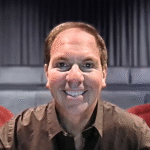
Where heritage meets hospitality: Reimagining CRE with Craig Deitelzweig | President & CEO | Marx Realty
Season 6 / Episode 11 / 35:13
In this episode, Craig shares how his passion for repositioning assets has shaped his approach to integrating hospitality into commercial real estate. Craig reflects on the importance of tenacity, thinking differently, and keeping promises, and why creating inspiring and authentic workspaces is key to tenant engagement and satisfaction.
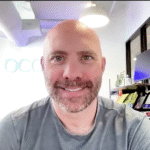
From CRE broker to PropTech founder with Matt Giffune | Co-founder | Occupier
Season 6 / Episode 10 / 42:18
In this episode, Matt discusses the value of industry experience in building PropTech, the evolution of office work in a hybrid era, and why quality and flexibility are now critical to attracting and retaining talent. Matt also shares his perspective on how technology can enhance tenant experience, and the growing potential of AI in the industry.
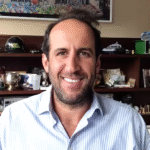
From family legacy to future-ready real estate with Michael Rudin | Co-CEO | Rudin
Season 6 / Episode 9 / 49:10
In this episode, Michael shares his vision for blending physical and digital experiences in buildings, the importance of connecting all stakeholders in the office ecosystem, and how Rudin is creating flexible, human-centered spaces that can transform with the click of a button.
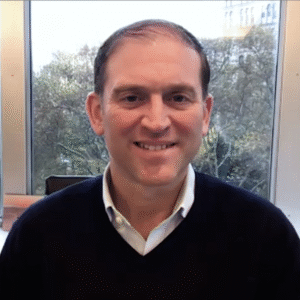
Creating value & enhancing tenant experience with Jonathan Bennett | President | AmTrustRE
Season 6 / Episode 12 / 49:09
In this episode, Jonathan shares how he is helping redefine what success looks like in today’s office market, the importance of differentiating buildings through thoughtful design and curated amenities, and how technology and AI are creating new opportunities to enhance the tenant experience.
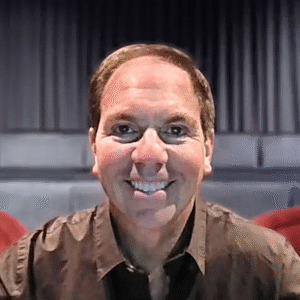
Where heritage meets hospitality: Reimagining CRE with Craig Deitelzweig | President & CEO | Marx Realty
Season 6 / Episode 11 / 35:13
In this episode, Craig shares how his passion for repositioning assets has shaped his approach to integrating hospitality into commercial real estate. Craig reflects on the importance of tenacity, thinking differently, and keeping promises, and why creating inspiring and authentic workspaces is key to tenant engagement and satisfaction.
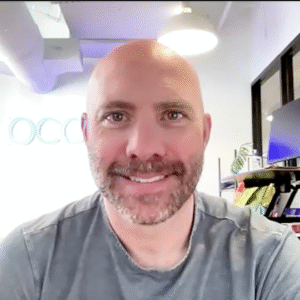
From CRE broker to PropTech founder with Matt Giffune | Co-founder | Occupier
Season 6 / Episode 10 / 42:18
In this episode, Matt discusses the value of industry experience in building PropTech, the evolution of office work in a hybrid era, and why quality and flexibility are now critical to attracting and retaining talent. Matt also shares his perspective on how technology can enhance tenant experience, and the growing potential of AI in the industry.
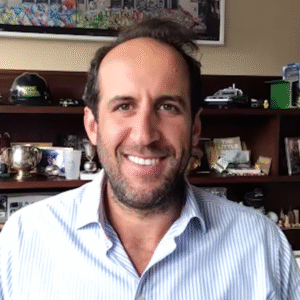
From family legacy to future-ready real estate with Michael Rudin | Co-CEO | Rudin
Season 6 / Episode 9 / 49:10
In this episode, Michael shares his vision for blending physical and digital experiences in buildings, the importance of connecting all stakeholders in the office ecosystem, and how Rudin is creating flexible, human-centered spaces that can transform with the click of a button.